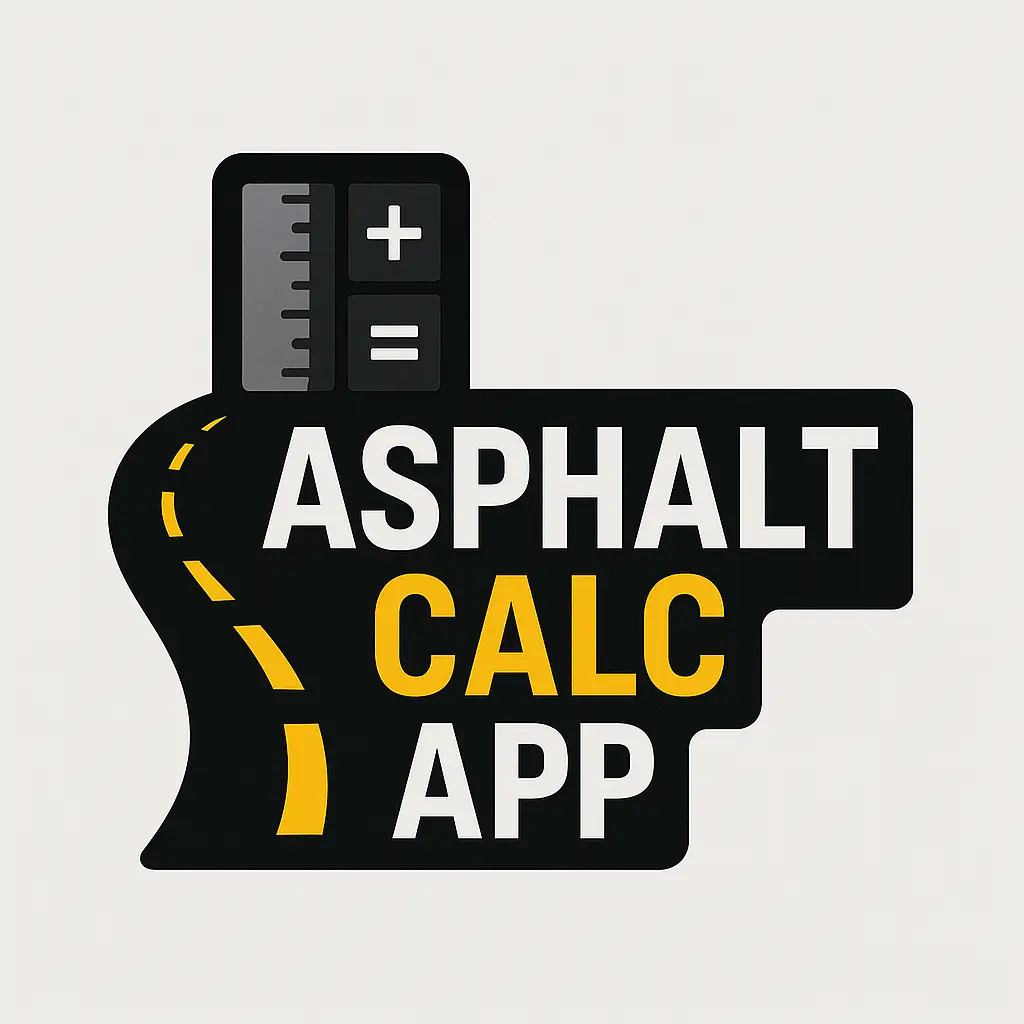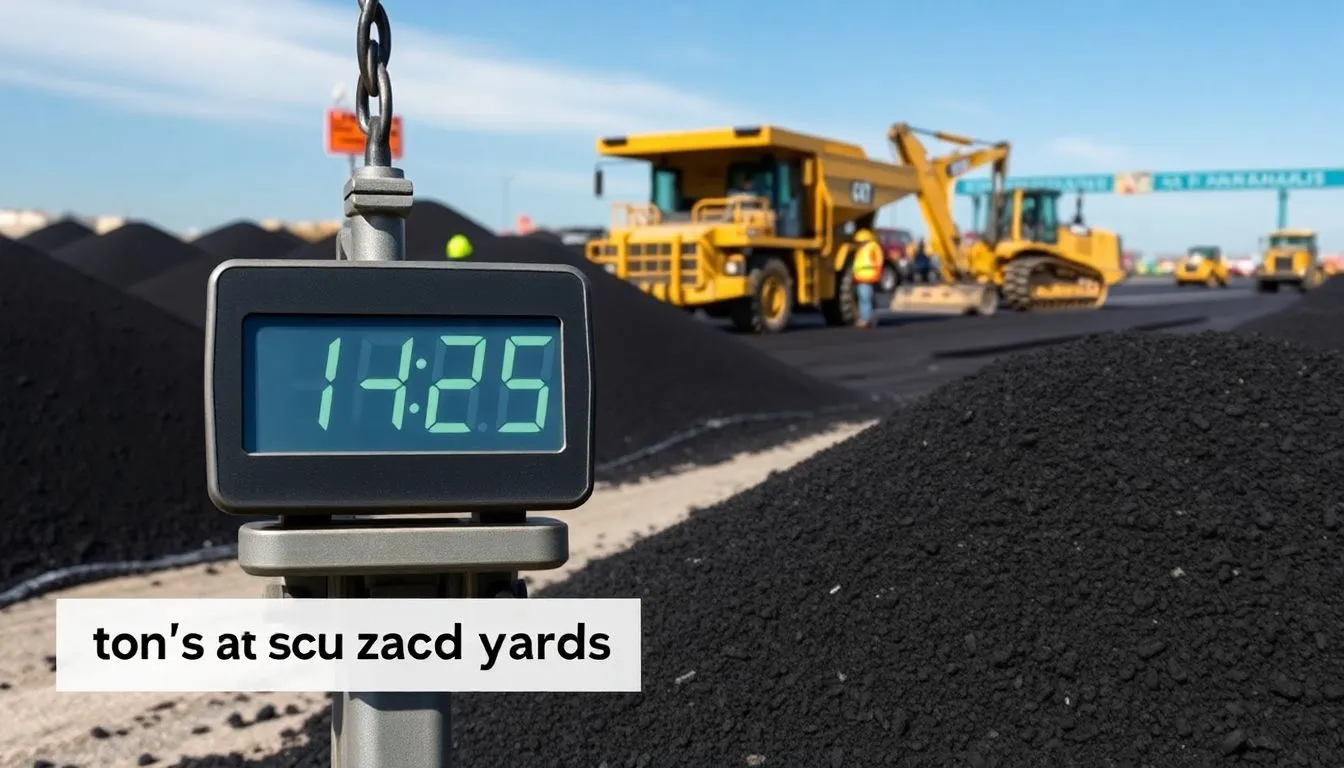Introduction
Mastering ton to cubic yard conversion for asphalt is critical for construction and paving operations. Whether you’re planning a driveway or a large highway, knowing the right volume helps avoid mistakes. Accurate measurements save money and keep projects on schedule. This guide explains everything you need to know about converting asphalt from tons to cubic yards.
Understanding Asphalt Measurements: Ton vs. Cubic Yard
What Is a Ton?
A ton is a weight measurement. In the asphalt world, it usually refers to 2,000 pounds, known as a short ton. In other countries, a ton might mean more or less, like a long ton (2,240 pounds) or a metric tonne (2,204.62 pounds). For most projects, you’ll use the short ton unless specified otherwise.
What Is a Cubic Yard?
A cubic yard shows how much space something takes up. Imagine a box that is 3 feet wide, 3 feet deep, and 3 feet high. That’s one cubic yard. Asphalt is often sold and measured in cubic yards because it shows how much space the material will fill.
Why Conversion Matters
Getting the appropriate amount of asphalt is critical for project success. Mixing up tons and cubic yards can lead to a shortage or waste. That can cause delays or extra costs. Proper conversion ensures you buy enough asphalt without overspending.
Factors Influencing Asphalt Density
Asphalt Types and Composition
Different asphalt mixes have different weights. Hot mix asphalt is usually denser, while cold mix is lighter. The mix design impacts how much a given volume weighs. Knowing the specific mix helps make accurate conversions.
Temperature and Compaction
Asphalt heats up and compacts during laying. When hot, asphalt is denser and weighs more. Once cooled and compacted, it reaches its final density. Ignoring temperature changes can skew your calculation.
Environmental Conditions
Moisture content and climate affect asphalt weight. Wet asphalt weighs more, and cold weather can reduce density. Always consider current conditions when estimating volume or weight.
How to Convert Tons of Asphalt to Cubic Yards
Standard Conversion Formula
To convert tons into cubic yards, use the following formula:
Volume (cubic yards) = (Weight in tons × 2000) / Density (lbs per cubic yard)
You multiply tons by 2,000 to get pounds, then divide by the asphalt’s density.
Step-by-Step Conversion Process
-
Find your asphalt weight in tons.
-
Determine the exact density value for your asphalt type.
-
Plug both into the formula.
-
Calculate to find cubic yards.
It’s that simple, provided you get the appropriate information.
Using Asphalt Density Data
Density figures can usually be found on technical datasheets from manufacturers or industry standards. Common densities for asphalt range from 130 to 150 lbs per cubic yard, depending on the mix.
Practical Examples and Calculations
Example 1: Small-Scale Paving Project
Suppose you have 10 tons of hot mix asphalt. Its density is 145 lbs per cubic yard.
-
Step 1: Convert tons to pounds: 10 × 2000 = 20,000 lbs
-
Step 2: Divide by density: 20,000 ÷ 145 ≈ 138.0 cubic yards
You need about 138 cubic yards of hot mix asphalt.
Example 2: Large Roadway Construction
If you have 50 tons of cold mix asphalt, with a density of 135 lbs per cubic yard:
-
Step 1: 50 × 2000 = 100,000 lbs
-
Step 2: 100,000 ÷ 135 ≈ 741.0 cubic yards
This project requires roughly 741 cubic yards.
Tips for Accurate Conversion
-
Always use density data that is relevant to your asphalt type.
-
Adjust numbers based on weather conditions or compaction factors.
-
Never guess your asphalt’s density — get the exact figure.
Tools and Resources for Accurate Conversion
Conversion Calculators
Online calculators make life easier. Simply input the asphalt weight and density, and you get your volume instantly. Use trusted sites recommended by industry professionals.
Industry Standards and References
Look for ASTM or AASHTO specifications for asphalt density. These organizations set reliable benchmarks. Manufacturer datasheets also provide specific data for their mixes.
Consulting Professionals (External Link)
When handling complex projects or large amounts of asphalt, talk to engineers or contractors. They can give expert advice to avoid costly mistakes.
Common Mistakes and How to Avoid Them
-
Using outdated or generic density figures.
-
Ignoring how temperature or compaction impacts density.
-
Mixing metric and imperial units incorrectly.
-
Forgetting to factor in moisture content, which adds extra weight.
These errors can easily throw off your calculations and cause issues on-site.
Actionable Tips for Construction and Paving Professionals
-
Always verify your asphalt’s density before starting calculations.
-
Record weather and compaction conditions during paving.
-
Add safety margins to your volume estimates.
-
Keep updated with the latest industry standards and specifications.
These simple steps help keep your projects smooth and on budget.
Conclusion
Converting tons of asphalt into cubic yards is essential for accurate planning. Knowing the factors that affect asphalt density — like mix type, temperature, and environment — makes your estimates more reliable. Use precise data and trusted tools to stay on top of your projects. Getting this right means fewer surprises, less waste, and better results. Master this conversion, and you’ll build smarter and faster every time.
Frequently Asked Questions (FAQs)
1. How do I convert tons of asphalt to cubic yards?
Use the formula:
Cubic Yards = (Tons × 2000) / Asphalt Density (in lbs per cubic yard)
Make sure you know the exact density of your asphalt mix to get accurate results.
2. What is the average density of hot mix asphalt?
Hot mix asphalt typically has a density between 140 to 150 lbs per cubic foot, or 3,780 to 4,050 lbs per cubic yard. Use the exact number from your supplier for best results.
3. How many cubic yards are in 1 ton of asphalt?
It depends on the density, but using an average density of 145 lbs/ft³:
1 ton ≈ 0.68 cubic yards.
4. Why is asphalt measured in both tons and cubic yards?
Tons measure weight, while cubic yards measure volume. Suppliers sell by weight, but contractors often need volume for planning and laying asphalt.
5. Does asphalt density change with temperature?
Yes. Hot asphalt is denser and more compact. As it cools, it expands slightly. Always consider temperature when estimating during laying.
6. Can I use an online calculator for this conversion?
Yes. Tools like the Asphalt Calculator allow you to quickly convert tons to cubic yards using density values.
7. What’s the risk of using incorrect density values?
Inaccurate density can result in ordering too much or too little asphalt, leading to waste, delays, or cost overruns.
8. How do environmental factors affect asphalt weight?
Moisture and cold weather can increase asphalt weight and reduce compaction, making density less predictable.
9. Are short tons, metric tonnes, and long tons the same?
No.
-
Short ton (U.S.): 2,000 lbs
-
Metric tonne: 2,204.62 lbs
-
Long ton (UK): 2,240 lbs
Always confirm which unit is being used.
10. Should I consult a professional for large projects?
Absolutely. Engineers or contractors can ensure precise measurements, saving you money and preventing logistical issues.

